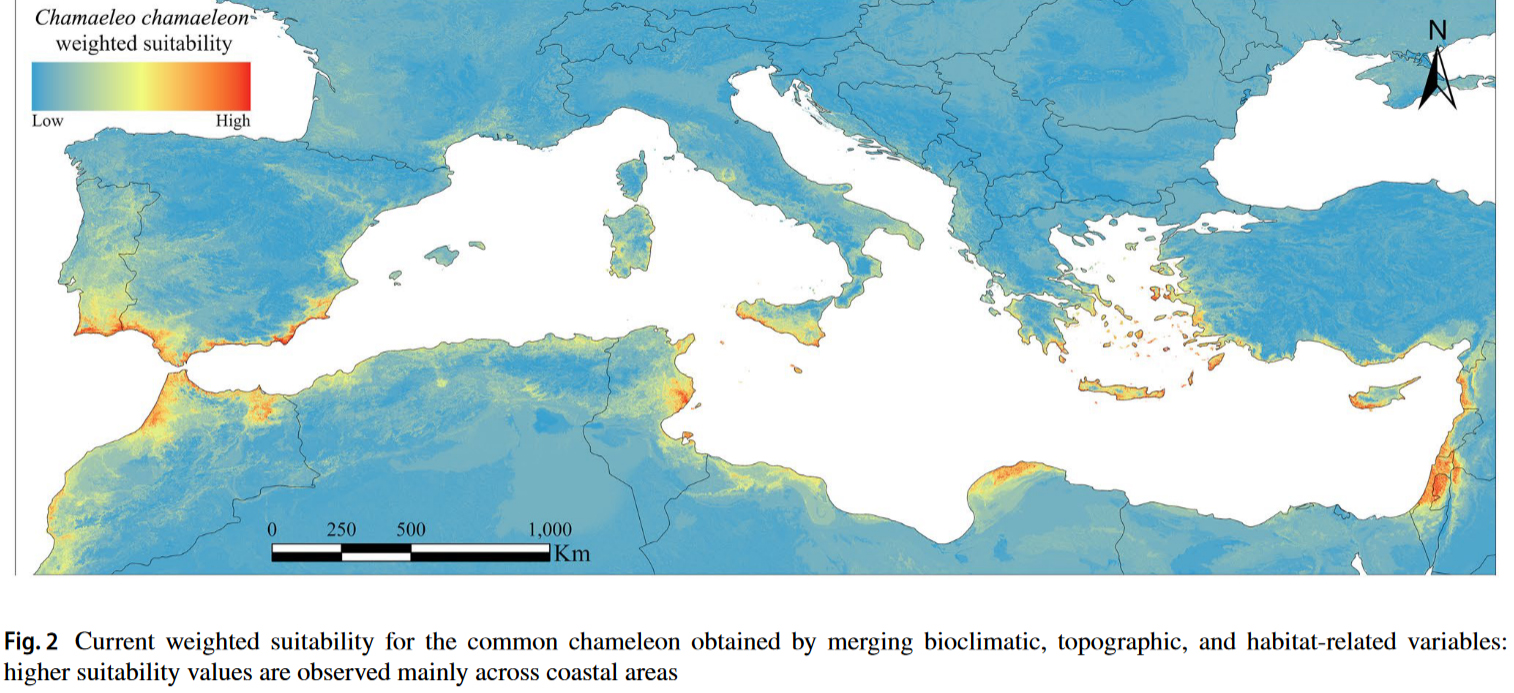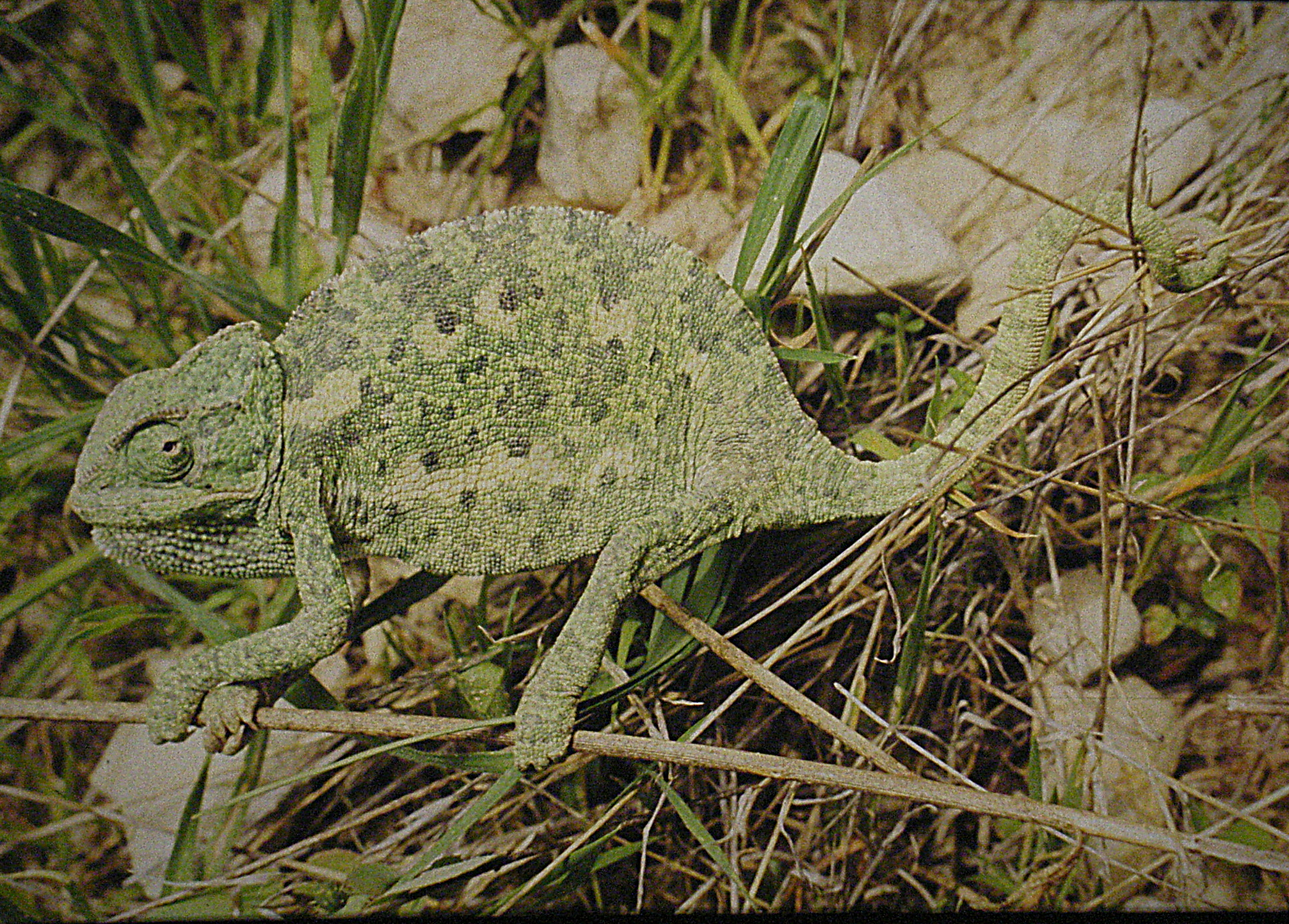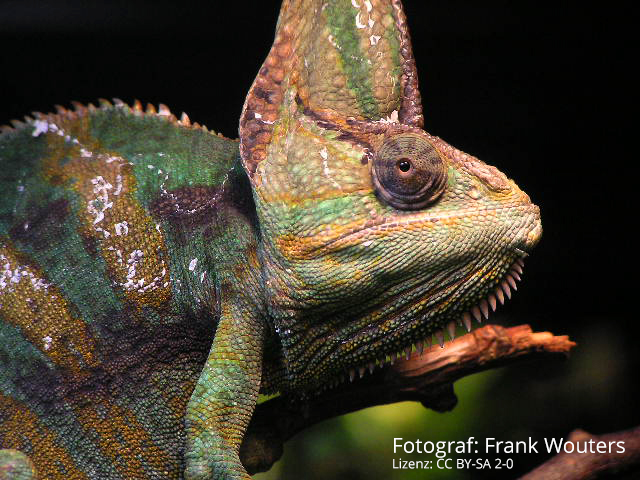Dried bodies of Chamaeleo chamaeleon have always been used in traditional medicine in Algeria. In the El Oued region, extracts and powders from common chameleons are still regularly used today for the therapy of various diseases and various superstitions. An Algerian biochemist has now tried to prove the benefits of chameleon powder in a somewhat curious way.
Allegedly exactly 1000 users of the powder as well as 100 hunters and sellers were questioned for a maximum of 10 to 15 minutes by means of questionnaires or interviews. The evaluation of these was not published. However, the author states that according to the interviews, chameleons are only hunted by “experienced persons”. However, the breeding season is left out, so no damage to the chameleon population is to be feared.
In addition, an unspecified number of wild Chamaeleo chamaeleon were captured and killed in Algeria. The organs were removed, the chameleons washed, salted and dried at 35 to 40°C for over a week. The dried bodies were then washed again and re-dried in an oven at 45°C. The chameleons were then killed using mice. Then the chameleons were ground using a mortar to obtain powder. Dry matter, ph values, protein, carbohydrate, fat, calcium, magnesium, sodium, potassium and ash contents of the powder were examined. A relatively high phosphorus content of 14.01% stood out, and traces of iron, zinc and copper were also detected. A relatively high concentration of vitamin E (19.23 mg/100 g powder) was noticed, as well as vitamin B1 (21 mg/100 g powder). Under laboratory conditions, the powder proved capable of scavenging radicals. Also in the laboratory, the powder as an extract at 100 mg/ml showed some efficacy against various bacteria. In a chicken chorioallantoic membrane (CAM) assay, angiogenesis was tested around a powder disc inserted into a fertilised chicken egg.
Several groups of laboratory rats were treated with carbimazole in the drinking water. Afterwards, one group was freely injected into the abdomen with a solution containing chameleon powder, one group was fed chameleon powder in various mixtures, another was given levothyroxine in the drinking water, another nothing at all and a final group was injected with water in the abdomen. After the experimental period, blood was taken and then all the rats were killed and dissected. The rats showed no reaction to the chameleon powder, while treatment with levothyroxine, not surprisingly, resulted in various changes in blood count and blood chemistry.
The author interestingly concludes from all these experiments that the use of dried chameleon powder is safe for use in humans and can treat tonsillitis, coughs, skin diseases such as vitiligo, scorpion stings, urinary tract infections, leukaemia (!) as well as thyroid diseases. However, none of his studies provides any proof of this and so this “study” remains more of an absurd curiosity.
Physicochemical composition and evaluation of biological activities of Chamaeleo chamaeleon
Ouafa Boudebia
Thesis TD571/007/01 der Universität von Eloued, 2023
DOI: none



 For the study, the existing literature, sampling by the author himself, OpenStreetMaps and information from the Global Biodiversity Information Facility (GBIF) were used, statistically processed and analysed. Climate, topography, habitat of the sites and connections of existing populations were used to predict potentially suitable new habitats.
For the study, the existing literature, sampling by the author himself, OpenStreetMaps and information from the Global Biodiversity Information Facility (GBIF) were used, statistically processed and analysed. Climate, topography, habitat of the sites and connections of existing populations were used to predict potentially suitable new habitats.

